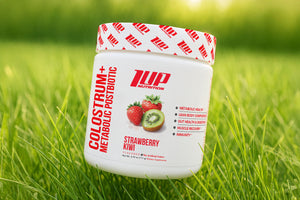Vitamin D -- the “sunshine” vitamin -- is an essential, fat-soluble vitamin that aids in the absorption of calcium and phosphate in the body. These nutrients play vital roles in the health of our bones, teeth, and muscles.[1]
Without sufficient vitamin D, bones would be brittle and weak and the possibility for breaks and fractures is substantially increased.
While Vitamin D is termed a “vitamin”, it actually is a hormone in the body, and in addition to supporting bone health, it also plays a pivotal role in immune function.
Our bodies can naturally synthesize vitamin D when our skin is exposed to direct sunlight. We can also obtain vitamin D from food or supplements.
Despite the importance vitamin D plays in the body, a significant portion of the population is deficient in this essential nutrient.[2]
In fact, recent estimates indicate that ~1 BILLION people across the world have subclinical vitamin D deficiency.[2]
The reason this is alarming is that recent studies have found associations between vitamin D deficiencies and diabetes, cardiovascular disease, cancer, diabetes, autoimmune diseases, depression, and upper respiratory infection.[2,3]
No doubt, the words “upper respiratory infection” and “immune system” immediately cause you to think of the current COVID pandemic.
Given the role vitamin D plays in immune function and the data showing a link between vitamin D deficiency and increased occurrence and severity of upper respiratory infection, researchers around the world are wondering if Vitamin D level may play a pivotal role in staving off the virus or lowering its severity.
Today, we take a look at the latest research between respiratory infections, COVID-19, and vitamin D.
COVID-19 & Vitamin D
A mounting body of evidence, including countries and populations hardest hit by COVID-19, have noted an association between vitamin D deficiencies and severe outcomes of COVID-19, including mortality.[3,4]
This isn’t all that surprising, when you consider that a 2017 meta-analysis including 25 randomized controlled trials and a total of 11,321 participants, aged 0 to 95 years, concluded that[5]:
“Vitamin D supplementation was safe and it protected against acute respiratory tract infection overall. Patients who were very vitamin D deficient and those not receiving bolus doses experienced the most benefit.”[3]
It is important to state that to date there is no research stating that Vitamin D supplements can treat or prevent COVID-19, just the same as there is a lack of research demonstrating that vitamin D supplements can treat or prevent any number of other diseases and infections.
Furthermore, studies to date on vitamin D and COVID-19 only note a relationship, more evidence is required before causality can be established.
Still, when you consider that, in the body, vitamin D helps counteract excessive inflammation which is brought on by a hyperactive immune system whereby the body essentially attacks itself as opposed to annihilating a virus, things start to add up and make sense.
And, COVID-19This condition can eat away at lung tissue, and that damage can cause respiratory distress syndrome. Eventually, other organs begin to fail.
What Causes Vitamin D Deficiency?
A number of factors contribute to the development of vitamin D deficiency, including:
Limited Sun Exposure
Vitamin D is called the “sunshine vitamin” for a reason...your skin needs to be exposed to direct sunlight (sans sunscreen) in order to synthesize it.
As such, individuals who limit sun exposure (whether by choice or as a consequence of job/lifestyle factors) are at risk for vitamin D deficiency.
Age
Our bodies naturally break down and become less efficient as we age. This includes our body’s ability to synthesize vitamin D from sunlight exposure.
The inefficiency may be one reason why the elderly appear to be more susceptible to COVID-19 and other respiratory viruses than younger individuals. It also must be considered that elderly individuals typically spend less total time outdoors than younger folks.
Individuals with Dark Skin
According to the National Institute of Health and Institute of Medicine[1,6], individuals with darker skin tones may have a decreased ability to synthesize vitamin D from sunlight exposure due to having greater amounts of the pigment melanin.
Living in Northern Climates
The further north you live, the less sun exposure you get during the winter months. Additionally, the angle of the sun during the coldest months may also prevent UVB rays from being absorbed by your skin.
IBD & Fat-Absorption Disorders
Since vitamin D is a fat-soluble vitamin, its absorption really hinges on the ability of the gut to absorb fat.
Individuals with GI disorders may have an imparied ability to absorb dietary fat, which subsequently reduces vitamin D absorption.
Obesity
Obesity doesn’t affect the body’s ability to synthesize vitamin D; however, obese individuals (those with a body mass index ≥30) are noted to have lower serum 25(OH)D levels compared with non-obese individuals.
Researchers believe obese individuals may need larger intakes of vitamin D to achieve 25(OH)D levels similar to normal weight individuals.[6]
Part of the reason for this may be due to the fact that overweight and obese individuals have greater amounts of body fat, which absorb more of the vitamin and affect its release into circulation.
Best Sources of Vitamin D
Sunlight
The easiest way for the average person to get vitamin D is to expose their skin to sunlight each day.
It doesn’t need to be for all that long either. As little as 20 minutes per day during the spring and summer months is enough.
Food
Consuming enough vitamin D through diet alone can be a challenge as not that many foods we typically eat are high in vitamin D.
Some foods high in vitamin D, include:
- fatty fish – such as salmon, mackerel, and sardines
- Egg yolks
- Red meat (beef)
- Liver
- Fortified foods – such as breakfast cereals, milk, etc.
Dietary Supplements
The final option to satisfy vitamin D requirements is to use supplements. The form of vitamin D that you want to supplement with is D3 (cholecalciferol) instead of D2.
The D2 form of vitamin D is cheaper to produce and less bioavailable than D3.
1UP Multi-Go Women and Multi-Go Men both use the more expensive, higher quality form of vitamin D3 (cholecalciferol).
References
- Vitamin D. (2020, March 24). https://ods.od.nih.gov/factsheets/VitaminD-HealthProfessional/
- Sizar O, Khare S, Goyal A, et al. Vitamin D Deficiency. [Updated 2020 Apr 28]. In: StatPearls [Internet]. Treasure Island (FL): StatPearls Publishing; 2020 Jan-. Available from: https://www.ncbi.nlm.nih.gov/books/NBK532266/
- Laird, E., Rhodes, J., & Kenny, R. A. Vitamin D and Inflammation: Potential Implications for Severity of Covid-19.
- Daneshkhah, A., Agrawal, V., Eshein, A., Subramanian, H., Roy, H. K., & Backman, V. (2020). The Possible Role of Vitamin D in Suppressing Cytokine Storm and Associated Mortality in COVID-19 Patients. medRxiv.
- Martineau, A. R., Jolliffe, D. A., Hooper, R. L., Greenberg, L., Aloia, J. F., Bergman, P., Camargo, C. A. (2017). Vitamin D supplementation to prevent acute respiratory tract infections: systematic review and meta-analysis of individual participant data. BMJ, 356, i6583. https://doi.org/10.1136/bmj.i6583
- Institute of Medicine, Food and Nutrition Board. Dietary Reference Intakes for Calcium and Vitamin D. Washington, DC: National Academy Press, 2010.






